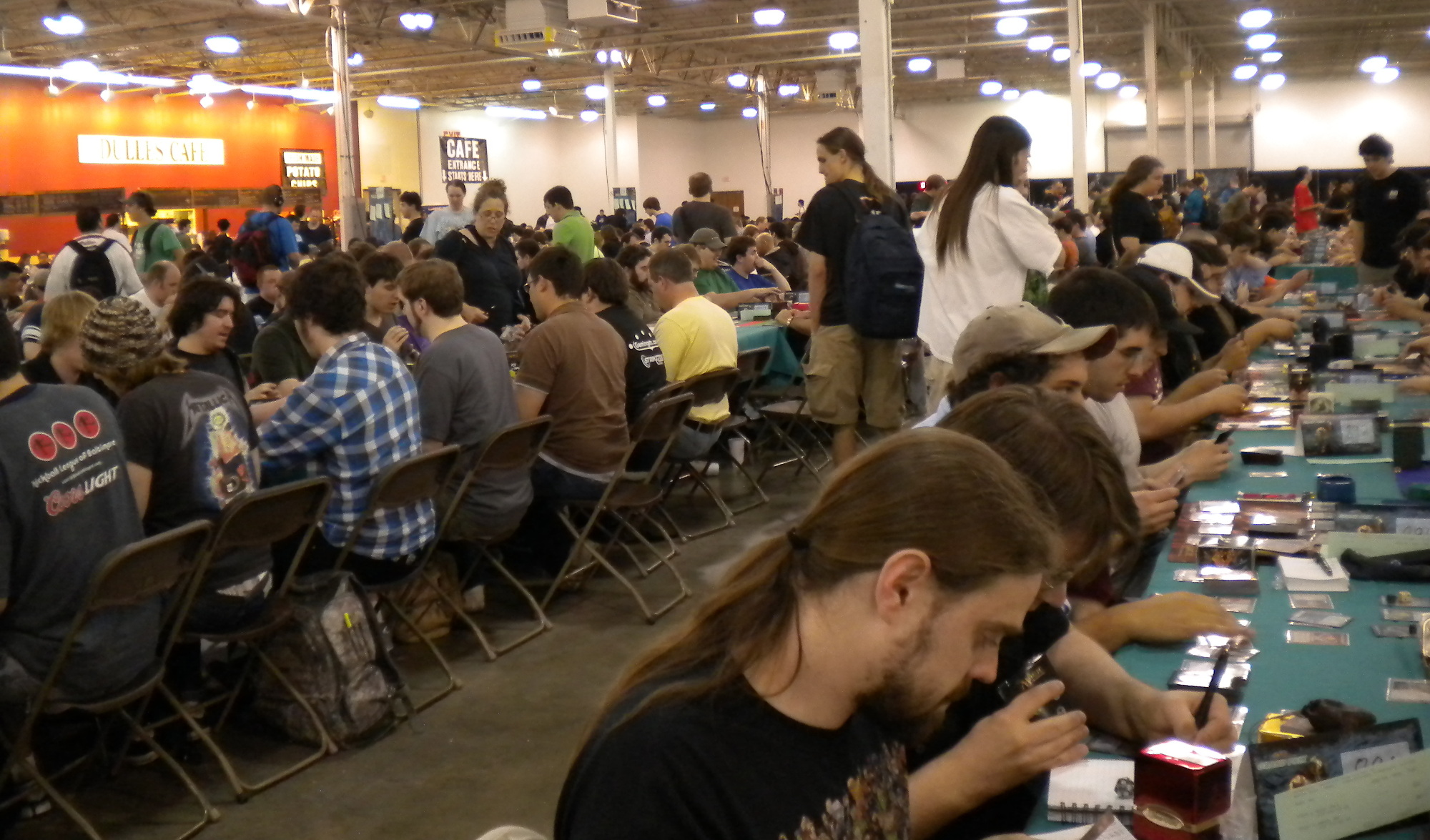Methods

Following our cultural examination of Magic’s rules development and evolution of its game types and play styles, we turn to protocol examination—qualitative data collection and analysis—via playing the game itself, using the 2015 rules and cards from (what was at the time) the most recently released set of cards. While the number of games we could feasibly play, record, and analyze would never reach a (quantitatively) reasonable and representative sample size, we nonetheless could gain insight into the fundamental—as well as perhaps more nuanced—protocols governing and influencing Magic play. Our data would then incorporate both the game events themselves, including all actions and responses taken by the players in each game, and our turn-by-turn reflections in situ about how we perceived certain protocols emerging, how they influenced our continued actions, and what we anticipated about our opponents’ future actions.
We separated our gameplay method into two sets of games. The first involved the use of five pre-constructed starter decks, a set of which are released with every new set of Magic cards. The starter decks for the 2015 Magic set made use of two-color combinations that were meant to emphasize various common play styles (e.g., White/Green Aggro or Blue/Black Control). We played five games with each of the five starter decks (for a total of 25 games), with each deck played once against each other deck, including another copy of the same deck. This initial set of games, we hypothesized, would provide us with a suitably broad, if shallow, grasp of Magic’s current (at the time) predominant protocols.
The second set of games (the deck lists for which are also available for perusal) involved each participant building his own deck and then playing a series of five games against each other participant, for a total of fifteen games. These decks were constructed from a selection of cards belonging to the 2015 Magic set—an admittedly small subset of the total number and variety of cards theoretically available to a Magic player. However, we wanted to use the starter deck cards as our foundation, as they illuminated particular protocols for us that could inform the deck-building process. We built on this foundation with a somewhat more diverse selection of more cards from the same set, in the hope that we might discover (before deck-building and in actual gameplay) more protocols at work, whether for or against our individual favors.
In both sets of games, we recorded all actions taken by each player as well as reflections made by each player during each round, on both his and his opponent’s turn. Among our goals with this approach was to compare what we anticipated might happen, based on our understanding of game protocols in use (or potentially in use), with what did happen as a result of one or more protocological decisions about how to pursue a victory in any given game.
Participants
Crucial to our investigation was participant familiarity with playing Magic. Each of us had a different level of exposure to and comfort with playing Magic and (for our second set of games) building custom decks. These differences in Magic-related background were helpful in giving us some variety in how we approached interpreting game rules (e.g., understanding why they existed as well as how they worked mechanically), styles of play, and strategies for particular kinds of victories.
(Note: participant names have been color-coded below to match their constructed deck color schemes and to distinguish participant voices on the included example game reports.)
Adam had played Magic at a local comic book shop when he was a teenager, where he participated in many small tournaments and casual games. Additionally, he continued to play in casual games for the next decade or so with friends. Referring to the player archetypes described above, Adam started as a Spike but became more of a Johnny as his play became more casual.
Kevin, prior to this project, had never played Magic before at all, although he had some general (albeit indirect) familiarity with the game due to having played similar kinds of card games. In terms of player archetypes, Kevin would consider himself a Johnny/Jenny.
As a boy, Trevor admired the artwork and knew the basics, but had few people to actually play with, so he only really started playing with this project. He’s a Vorthos/Timmy/Johnny (VTJ) combination. He learned a lot and has come to finally really enjoy Magic, regularly playing with Adam, and generally being beaten into the dust.